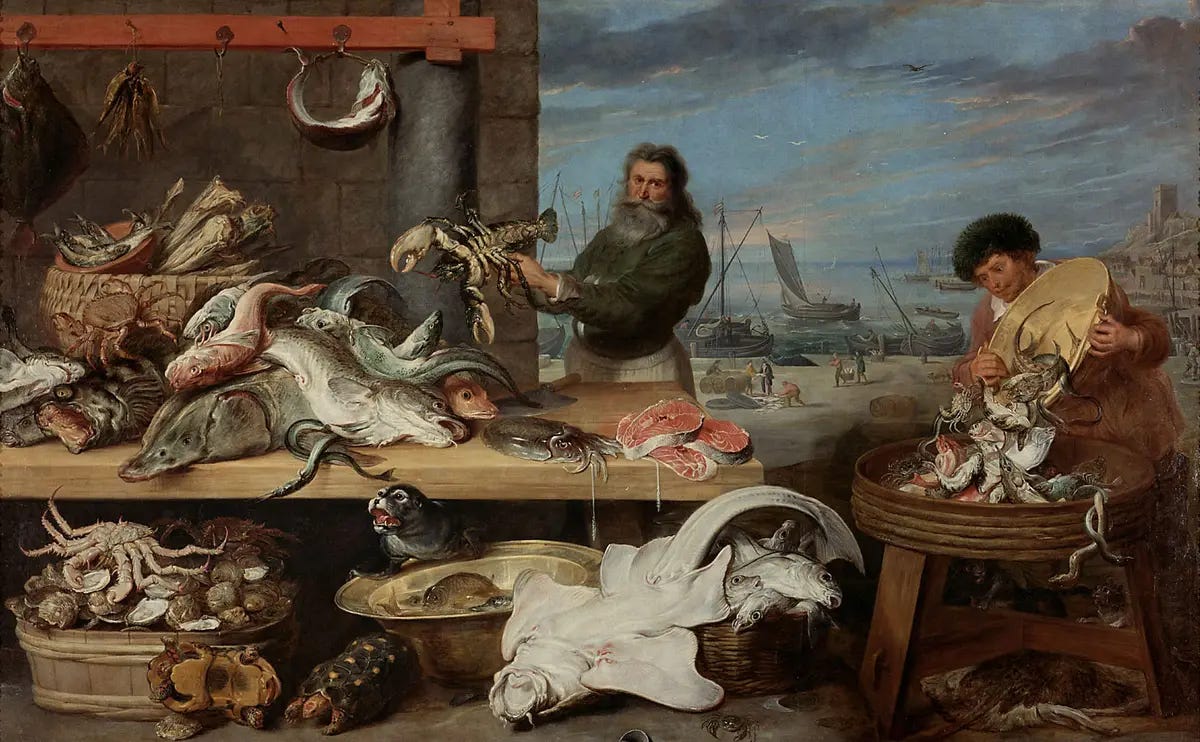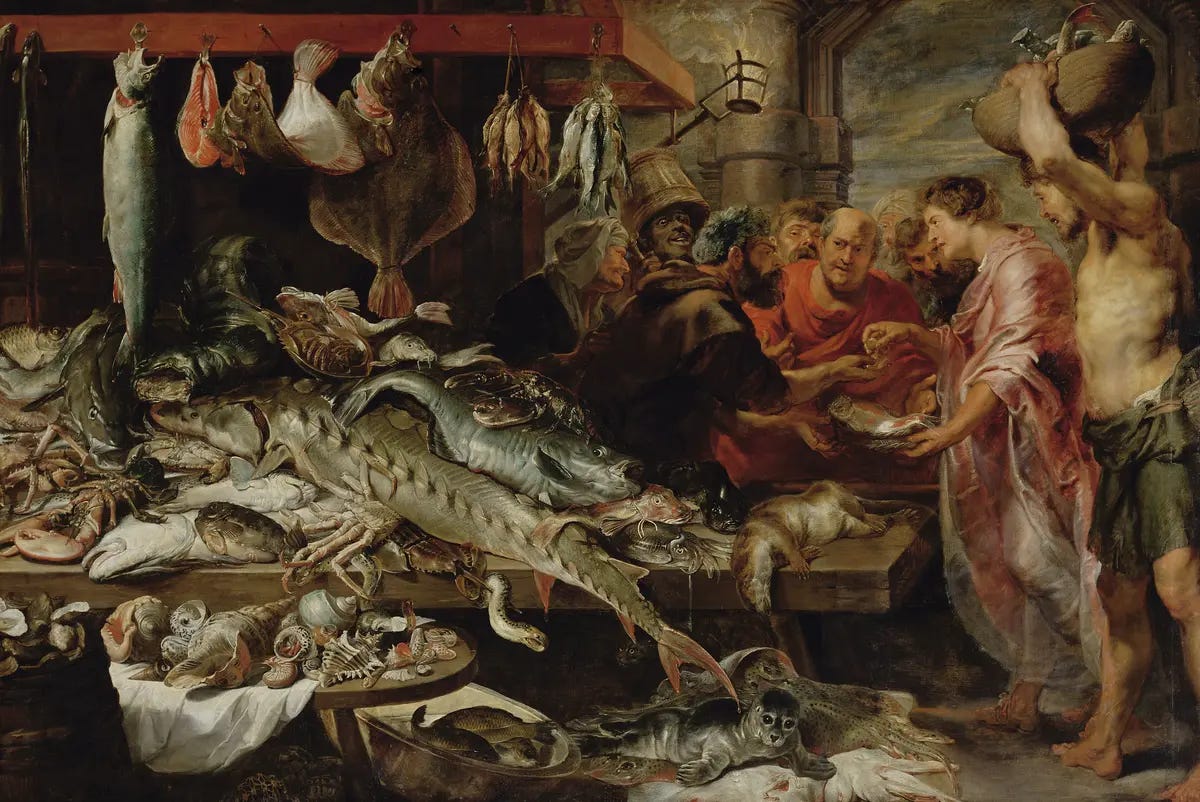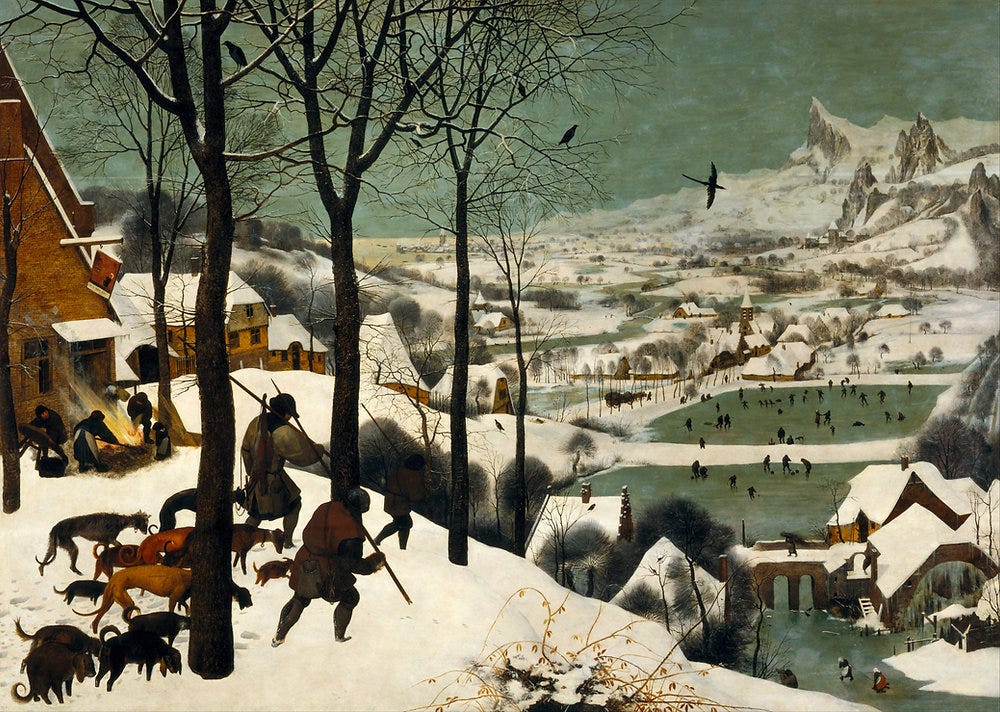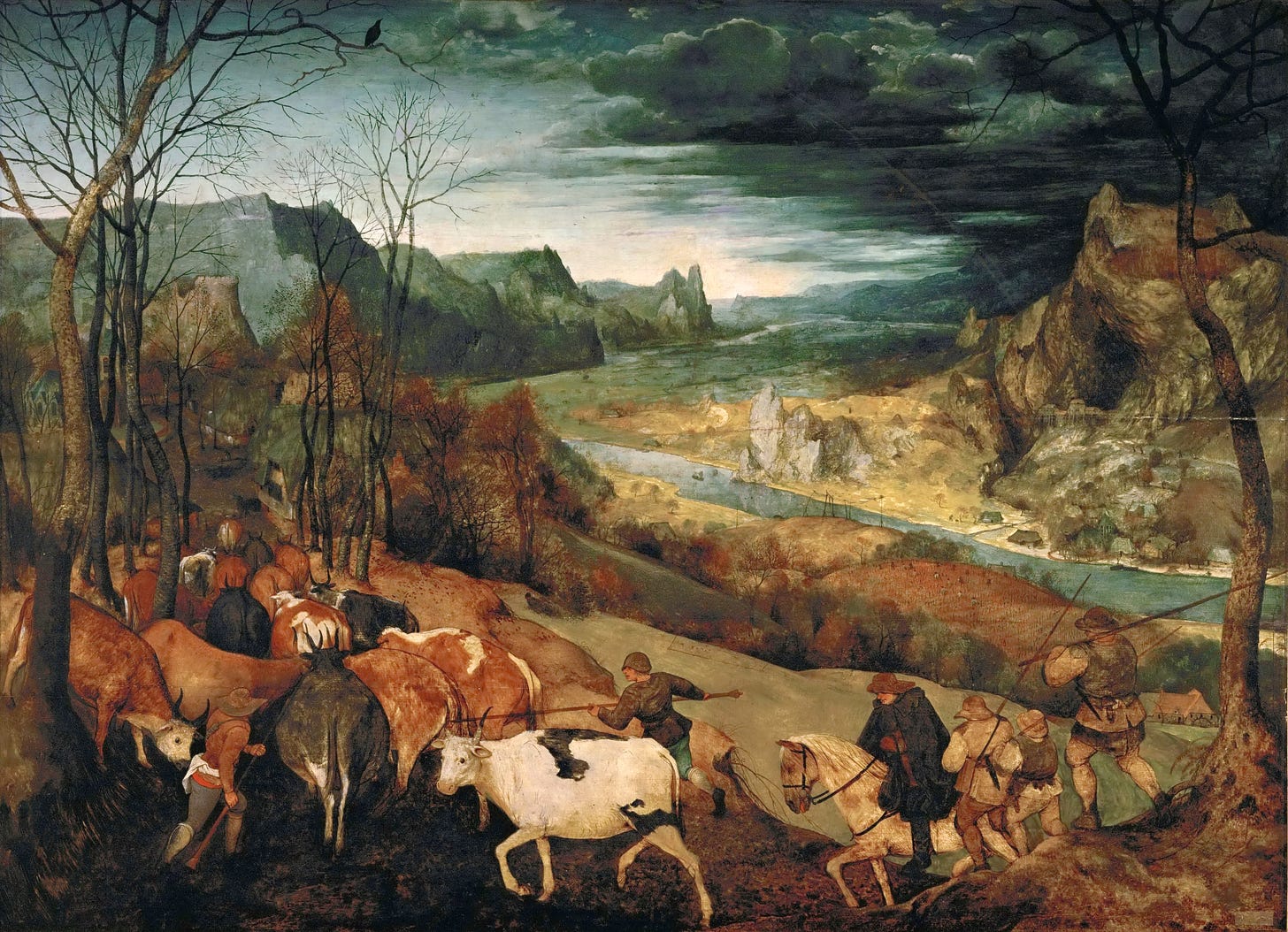Wind on the Danube
A postcard from Vienna
A cold wind blows from the Danube. Rain hovers nearby, but mercifully only a few drops come down in the evening. Later, in Zagreb, we’re told that Vienna is always cold in the summer. At the end of the day, we brave the cold to ride the tallest rotating swing in the world, and the wind whips by along with this city, rotating too fast to focus on any single point. Under our bare feet (we left our sandals on the ground far below), the Prater, one of the oldest amusement parks in the world, spins wildly.
The Kunsthistorischer Museum is overflowing with the great masters, and long after we’ve left I have visions of Snyders’ and Rubens’ fishes spilling out of the Danube canal and into the streets, of Bruegel’s riotous peasants — ah, but here comes the Sachertorte! — we’re at the Café Kafka, which we chose over the neighboring Sperl, which had the dubious distinction of being rumored to be Hitler’s favorite in Vienna.
Behind our table is a large black-and-white poster of the actress Romy Schneider. Someone has taped a pearl earring to her ear with a bit of scotch tape. On the bar, apricot, pear, and plum schnapps.
The Sachertorte and coffee interrupts the flopping fish and carousing peasants in my imagination, to say nothing of the hundreds of nude and angular Greek men crowding off their vases. The cake at the Café Kafka is not the best, but it sure isn’t bad.
In a small, crowded bookshop in the center we find nineteenth-century prints and an illustrated children’s book in the old German script about an orphaned mouse who loses his mouse parents in Chapter 1 (it must be a children’s book for emotionally mature kids). The proprietor is mustached and bearded, nearsighted, gentle and soft-spoken as a mouse himself. The prices are mysteriously reasonable.
Not every city has bookshops like this. That, and the art. Only here can you see Bruegel’s seasons, windows onto a way of life that is long gone. Only they’re not windows exactly. In real life these paintings are larger than windows, and they press upon the room. Vienna — a stone city that was always cosmopolitan, as far as I can tell — vanishes. In its place, the lowing of cows, footfalls in the snow, distant shouts.
I know that too much has been written about these paintings, though I have read none of it. I have seen cows, of course; I’ve seen hunters, dogs, and snow. But I have never seen them with the eyes of a sixteenth-century painter. That is something that sticks with you, and it’s a good reason to come to Vienna.






